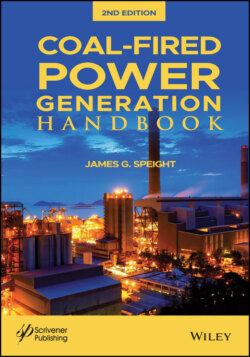Читать книгу Coal-Fired Power Generation Handbook - James Speight G., James G. Speight - Страница 28
1.7 Energy Independence
ОглавлениеEnergy independence has been a political non-issue in the United States since the first Arab oil embargo in 1973. Since that time, the speeches of various presidents and the Congress of the United States have continued to call for an end to the dependence on foreign oil by the United States. The congressional rhetoric of energy independence continues but meaningful suggestions of how to address this issue remain few and far between.
Energy interdependence also makes the domestic economy more susceptible to disruptions in distant and unstable regions of the globe, such as the Middle East, South America, and Africa. In fact, in many countries with proven reserves, oil production could be shut down by wars, strikes, and other political events, thus reducing the flow of oil to the world market. If these events occurred repeatedly, or in many different locations, they could constrain exploration and production, resulting in a peak despite the existence of proven oil reserves.
Even in the United States, political considerations may affect the rate of exploration and production of energy sources. For example, restrictions imposed to protect environmental assets mean that some oil may not be produced. In addition, policies on federal land use need to take into account multiple uses of the land including environmental protection. Environmental restrictions may affect a peak in oil production by barring oil exploration and production in environmentally sensitive areas.
The government must adopt policies that ensure energy independence. The US Congress is no longer believable when the members of the Congress lay the blame on foreign governments or events for an impending crisis. In the United States, crude oil imports are considered a threat to national security but there is also the line of thinking that the level of imports has no significant impact on energy security, or even national security. However, the issue becomes a problem when import vulnerability increases as crude oil imports rise, which occurs when oil-consuming countries increase the share of crude oil imports from politically unstable areas of the world.
Currently, the United States is an exporter of crude oil and crude oil products but the question remains related to the longevity of such a situation. In addition, US dependence on crude oil has increased in recent years and this indicates two possible areas of concern regarding the extent to which crude oil influences energy security: (i) the increase in the crude oil share of energy use, and (ii) the inability or unwillingness of the United States to reduce dependence on oil. It is because of such variations that the potential of gasification must be considered as an option for energy production, particularly for the production of liquid fuels and chemicals.
For many decades, coal has been the primary feedstock for power generation but due to recent concerns related to the use of fossil fuels and the resulting environmental pollutants, irrespective of the various gas cleaning processes and gasification plant environmental cleanup efforts, there is a move to feedstocks other than coal for gasification processes (Speight, 2013). Indeed, the mounting interest in the use of mixed-coal feedstocks and non-coal feedstocks for power generation reflects the potential for lower cost control of greenhouse gases than other coal-based systems.
Furthermore, power generation units can accept a variety of feedstocks but the reactor must be selected on the basis of feedstock properties and behavior in the process. Also, the disposal of municipal and industrial waste has become an important problem because the traditional means of disposal, landfill, are much less environmentally acceptable than previously. Much stricter regulation of these disposal methods will make the economics of waste processing for resource recovery much more favorable. A method of processing waste streams is to convert the energy value of the combustible waste into a fuel. One type of fuel attainable from waste is a low heating value gas, usually 100 to 150 Btu/scf, which can be used to generate process steam or to generate electricity.
Waste may be municipal solid waste (MSW) which had minimal presorting, or refuse- derived fuel (RDF) with significant pretreatment, usually mechanical screening, and shredding. Other more specific waste sources (excluding hazardous waste) and possibly including crude oil coke, may provide niche opportunities for co-utilization. The traditional waste to energy plant, based on mass-burn combustion on an inclined grate, has a low public acceptability despite the reduction in the emissions achieved over the last decade with modern flue gas clean-up equipment. This has led to difficulty in obtaining planning permissions to construct needed new waste to energy plants. After much debate, various governments have allowed options for advanced waste conversion technologies (gasification, pyrolysis, and anaerobic digestion), but will only give credit to the proportion of electricity generated from non-fossil waste.
Co-utilization of waste and biomass with coal may provide economies of scale that help achieve the above identified policy objectives at an affordable cost. In some countries, governments propose mixed feedstock processes as being well suited for community-sized developments, suggesting that waste should be dealt with in smaller plants serving towns and cities, rather than moved to large, central plants (satisfying the so-called proximity principal).
Use of waste materials as feedstocks for power generation may attract significant disposal credits. Cleaner biomass materials are renewable fuels and may attract premium prices for the electricity generated. Availability of sufficient fuel locally for an economic plant size is often a major issue, as is the reliability of the fuel supply. Use of more-predictably available coal alongside these fuels overcomes some of these difficulties and risks. Coal could be regarded as the flywheel which keeps the plant running when the fuels producing the better revenue streams are not available in sufficient quantities.
